| SKS | |
|---|---|
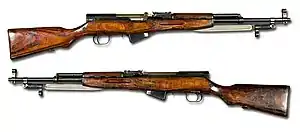 An SKS from the collections of Armémuseum, Stockholm, Sweden | |
| Type | Semi-automatic rifle |
| Place of origin | Soviet Union |
| Service history | |
| In service | 1949 – present |
| Used by | See Users |
| Wars | See Conflicts |
| Production history | |
| Designer | Sergei Gavrilovich Simonov |
| Designed | 1941 – 1944[1] |
| No. built | 5,000,000[2] 15,000,000+[3] |
| Variants | See Variants |
| Specifications | |
| Mass | 3.85 kg (8.5 lb)[4] |
| Length | 1,020 mm (40 in),[4] M59/66: 1,120 mm (44 in) |
| Barrel length | 520 mm (20 in),[4] M59/66: 558.8 mm (22.00 in) |
| Cartridge | 7.62×39mm M43[4] |
| Action | Short stroke gas piston, tilting bolt, self-loading |
| Rate of fire | Semi-automatic rate: 35–40 rounds/min[4] |
| Muzzle velocity | 735 m/s (2,411 ft/s)[4] |
| Effective firing range | 400 metres (440 yd)[4] |
| Feed system | 10-round stripper clip,[4] internal box magazine. |
| Sights | Hooded post front sight, tangent notch rear sight graduated from 100 to 1,000 meters.[4] |
The SKS (Russian: Самозарядный карабин системы Симонова, romanized: Samozaryadny Karabin sistemy Simonova, 1945, self-loading carbine of (the) Simonov system, 1945) is a semi-automatic rifle designed by Soviet small arms designer Sergei Gavrilovich Simonov in 1945.
The SKS was first produced in the Soviet Union but was later widely exported and manufactured by various nations. Its distinguishing characteristics include a permanently attached folding bayonet and a hinged, fixed magazine. As the SKS lacked select-fire capability and its magazine was limited to ten rounds, it was rendered obsolete in the Soviet Armed Forces by the introduction of the AK-47 in the 1950s. Nevertheless, SKS carbines continued to see service with the Soviet Border Troops, Internal Troops, and second-line and reserve army units for decades.
The SKS was manufactured at Tula Arsenal from 1949 to 1958, and at the Izhevsk Arsenal from 1953 to 1954, resulting in a total Soviet production of about 2.7 million. Throughout the Cold War, millions of additional SKS carbines and their derivatives were also manufactured under license in the People's Republic of China, as well as a number of countries allied with the Eastern Bloc. The SKS was exported in vast quantities and found favour with insurgent forces around the world as a light, handy weapon which was adequate for guerrilla warfare despite its conventional limitations.
Beginning in 1988, millions have also been sold on the civilian market in North America, where they remain popular as hunting and sporting rifles.
Design

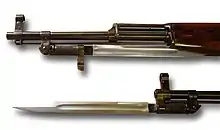

The SKS has a conventional layout, with a wooden stock and rifle grip. It is a gas-operated rifle that has a spring-loaded bolt carrier and a gas piston operating rod that work to unlock and cycle the action via gas pressure exerting pressure against them. The bolt is locked to contain the pressure of ignition at the moment of firing by tilting downwards at its rear and being held by a lug milled into the receiver. At the moment of firing, the bolt carrier is pushed rearwards, which causes it to lift the bolt, unlocking it, and allowing it to be carried rearwards against a spring. This allows the fired case to be ejected and a new round from the magazine to be carried into the chamber. The SKS represents an intermediate step in the process towards the development of true assault rifles, being shorter and less powerful than the semi-automatic rifles that preceded it, such as the Soviet SVT-40, but being longer (by 10 cm/4 in) than AK-series rifles which replaced it. As a result, it has a slightly higher muzzle velocity than those arms that replaced it.
The SKS's ten-round internal box magazine can be loaded either by hand or from a stripper clip. Cartridges stored in the magazine can be removed by pulling back on a latch located forward of the trigger guard (thus opening the "floor" of the magazine and allowing the rounds to fall out).[4] In typical military use, the stripper clips are disposable. If necessary, they can be reloaded multiple times and reused.
While early (1949–50) Soviet models had spring-loaded firing pins, which held the pin away from cartridge primers until struck by the action's hammer, most variants of the SKS have a free-floating firing pin within the bolt. Because of this design, care must be taken during cleaning (especially after long storage packed in cosmoline) to ensure that the firing pin can freely move and does not stick in the forward position within the bolt. SKS firing pins that are stuck in the forward position have been known to cause accidental "slamfires" (the rifle firing on its own, without pulling the trigger and often without being fully locked). This behavior is less likely with the hard primer military-spec ammo for which the SKS was designed, but as with any rifle, users should properly maintain their firearms. For collectors, slamfires are more likely when the bolt still has remnants of cosmoline embedded in it that retards firing pin movement. As it is triangular in cross section with only one way to properly insert it (notches up), slamfires can also result if the firing pin is inserted in one of the other two orientations.
In most variants (Yugoslav models being the most notable exception), the barrel is chrome-lined for increased wear and heat tolerance from sustained fire and to resist corrosion from chlorate-primed corrosive ammunition, as well as to facilitate cleaning. Chrome bore lining is common in military rifles. Although it can diminish precision, its effect on practical accuracy in a rifle of this type is limited.
The front sight has a hooded post. The rear sight is an open notch type which is adjustable for elevation from 100 to 1,000 metres (110 to 1,090 yd). There is also an all-purpose "battle" setting on the sight ladder (marked "П", for "Прямой выстрел", meaning "Straight shot"), set for 300 metres (330 yards). This is attained by moving the elevation slide to the rear of the ladder as far as it will go.[4][5] The Yugoslav M59/66A1 has folddown luminous sights for use when firing under poor light conditions, while the older M59 and M59/66 do not.[4]
All military SKSs have a bayonet attached to the underside of the barrel, which is extended and retracted via a spring-loaded hinge. Both blade and spike bayonets were produced.[4] Spike bayonets were used on the 1949 Tula Russian SKS-45, the Chinese Type 56 from mid 1964 onward, and the Albanian Model 561. The Yugoslavian-made M59/66 and M59/66A1 variants are the only SKS models with an integral grenade launching attachment.[4]
The SKS is easily field stripped and reassembled without specialized tools, and the trigger group and magazine can be removed with an unfired cartridge, or with the receiver cover. The rifle has a cleaning kit stored in a trapdoor in the buttstock, with a cleaning rod running under the barrel, in the same style as the AK-47. The cap for the cleaning kit also serves as a cleaning rod guide, to protect the crown from being damaged during cleaning. The body of the cleaning kit serves as the cleaning rod handle. In common with some other Soviet-era designs, it trades some accuracy for ruggedness, reliability, ease of maintenance, ease of use, and low manufacturing cost.
Development history
The Soviet Union utilized a number of semi-automatic as well as select-fire rifles during World War II, namely the AVS-36, SVT-38, and the SVT-40.[6] However, the primary service rifle of the Red Army remained the bolt-action Mosin-Nagant, which fired the powerful but heavy 7.62×54mmR round.[6] Even prior to the war, the Red Army had recognized that these weapons were obsolete and initiated a program to modernize its existing small arms, although this was interrupted by the German invasion of the Soviet Union in 1941.[7] Among the military development programs the Soviet Union had monitored in other countries were the Finnish, Swiss, and German developments in intermediate rifle cartridges.[7] These had limited range and muzzle velocity compared to the 7.62x54mmR and other contemporary rifle rounds such as the 7.92×57mm Mauser and the .30-06 Springfield, but also possessed numerous advantages: they were cheaper to manufacture, permitted easier weapons handling due to their much-reduced recoil and muzzle blast, and enabled infantry to carry more due to their small size and light weight.[6] They could also be fired from shorter and lighter rifles.[6] The Red Army's interest in an intermediate cartridge was piqued when stocks of 7.92×33mm Kurz ammunition were captured from the Wehrmacht, and by the end of 1943, Soviet technicians had developed a similar cartridge based closely on the German design, the 7.62x39mm M43. Early trials showed that the new round had the penetrative capacity to pierce three panels of plywood, each of 2.25 cm thickness, at a six hundred meter range.[8] Red Army officials believed this was more than enough power to wound or kill a soldier at typical battlefield range.[8] Limited production of the new ammunition type commenced in 1944.[9]
Hurried efforts were made to develop a rifle capable of firing the new cartridge, and the first prominent design was produced by Sergei Gavrilovich Simonov.[8] This became known as the Samozaryadny Karabin sistemy Simonova (SKS), or Simonov's self-loading carbine system.[8] Simonov had already been working on a new semi-automatic carbine chambered for a lighter cartridge as early as 1941, owing to recent complaints about the effectiveness of the SVT-40.[1] His earliest prototypes were chambered for the 7.62×25mm Tokarev pistol cartridge, which was also used in the PPSh-41 submachine gun.[1] He also built at least one prototype chambered for the larger 7.62x54mmR cartridge.[1] Unlike previous Soviet semi-automatic rifles, these utilized fixed ten-round magazines loaded from stripper clips.[1] Simonov's design was based on the operating mechanism of the PTRS-41 anti-tank rifle he'd previously developed for the Red Army the same year.[6] Red Army evaluation of the prototypes was shelved due to the German invasion, and did not resume until Simonov rechambered and modified his weapon to accommodate the 7.62x39mm cartridge in 1944.[1]
The SKS was light, simple, and considerably shorter than the Mosin-Nagant, which made it easier to handle in dense foliage and urban environments.[8] Simonov deliberately designed the SKS with loose-fitting parts, making it less likely to jam when dirty, inadequately lubricated, or clogged with carbon residue.[8] This was a notable departure from the relatively tight tolerances on the previous generation of Soviet semi-automatic rifles, and was also part of the design process of the AK-47.[8] The SKS was officially designated as a carbine, although it did not fulfill the same role as the M1 carbine used in the United States Army at the time, and more resembled a traditional infantry rifle both in terms of design and envisaged role.[6] Simonov's early 7.62x39mm models were quickly pressed into service, and saw action with troops of the 1st Belorussian Front during the final months of World War II.[7] The SKS was still undergoing active field trials when Germany surrendered to the Allies in May 1945.[10] Mass production was delayed while the SKS underwent minor technical changes and alterations as a result of its trial performance during that conflict.[7] By the end of the 1940s, it finally superseded the various models of the Mosin-Nagant as the standard Soviet infantry rifle.[7]
The AK-47 assault rifle and the RPD machine gun, both firing the same 7.62x39mm cartridge, were introduced into Soviet service around the same time to complement the SKS.[7] During the 1950s, the Soviet Army rapidly mechanized its existing infantry formations, shifting primarily from light infantry on foot to a much more mobile force deploying from armored vehicles.[7] This fundamental shift in tactics called for large volumes of automatic fire to be delivered from moving vehicles, and the AK-47, with its select-fire capability, compact size, and larger detachable magazine, was more appropriate for this role than the SKS.[7] As a result, the AK-47 gradually replaced the SKS as the standard service rifle of the Soviet Army throughout the 1950s.[7] A US Army review of Soviet tactics and weapons found that "the SKS was phased out of infantry use in the late 1950s, not because of any inherent faults, but because a radical change in Soviet tactics rendered it obsolete."[7] However, even at the time of its introduction, Soviet military strategists had always desired an infantry rifle with more firepower than the SKS.[8] They needed a weapon that better permitted the infantry to give massed automatic fire during an offensive.[1] Military historian Edward Ezell suggested that the SKS was always intended to be an interim solution, and the Soviets simply pushed it into production because they wanted any rifle chambered for the 7.62x39mm cartridge in general service as soon as possible, while a select-fire assault rifle was still being perfected.[1]
In June 1955, the Soviet Union hosted a military and civilian delegation from the People's Republic of China led by General Zhao Erlu.[8] The Chinese delegation was given a tour of the Tula Arms Plant, where they observed the assembly of SKS carbines.[8] General Erlu expressed an interest in acquiring the technology for the SKS, as China had previously only been granted a license to produce the Mosin-Nagant, which was by then a rather antiquated design.[8] After negotiations between Mao Zedong and Soviet premier Nikita Khrushchev, the Soviet Union agreed to transfer the technology for the SKS, as well as the AK-47 and the 7.62x39mm cartridge.[11] Parallel production lines for the SKS and the AK-47 were set up in China the following year.[8] Chinese production of the SKS continued for decades after it ceased in the Soviet Union, and over nine million had been manufactured as the Type 56 carbine in that country by the 1980s.[12]
In terms of production numbers, the SKS was the ninth most produced self-loading rifle design in history.[13] Nearly all the Warsaw Pact member states adopted the SKS at one time or another, and technical specifications to produce the carbine were shared with the German Democratic Republic (East Germany) and Romania.[12] With the assistance of Soviet or Chinese technicians and generous military grants, armaments factories producing SKS carbines were later established in North Vietnam, North Korea, Yugoslavia, and Albania as well.[12]
While remaining far less ubiquitous than the AK-47, both original Soviet rifles and foreign variants can still be found today in civilian hands as well as in the arsenals of insurgent groups and paramilitary forces around the world.[13] The SKS has been circulated in up to 69 countries, both by national governments and non-state actors.[14] In 2016, it was still being widely circulated among civilians and non-state actors in at least five of those countries and remained in the reserve and training inventories of over 50 national armies.[14]
Service history

A few years after the SKS was brought into service in 1949, it was rendered obsolete for the Soviet military by the new AK-47, which was adopted in increasing numbers by Soviet front-line units throughout the 1950s.[15] The SKS was used by Soviet troops and Hungarian partisans alike during the 1956 Hungarian Revolution.[16][17] Thereafter, while the SKS was retained for various auxiliary duties, it ceased to have any real military significance in the Soviet Union.[15] Only a small number remained in active service, mostly with support units, until the 1980s.[18] However, the SKS found a longer second life in the service of various Soviet-aligned nations, in particular the People's Republic of China.[15] The Chinese state manufactured it for decades after production had ceased in the Soviet Union, mainly to arm its vast military reserves and militia forces.[15] The SKS was also in general issue with regular units of the People's Liberation Army (PLA) for thirty years as the Type 56 carbine.[19] In 1978, the typical PLA infantry battalion was armed with 360 Type 56 carbines and 221 Type 56 assault rifles.[20] PLA forces armed primarily with Type 56 carbines fought Soviet troops armed primarily with AK-47s during the Sino-Soviet border conflict.[21][22] During the Sino-Vietnamese War, PLA infantry still armed primarily with Type 56 carbines engaged Vietnamese infantry armed with the same weapon and its Soviet equivalent.[20] The conflict was notable in that both sides commonly fielded the Type 56/SKS alongside AK-pattern automatic rifles, although the Vietnamese forces had largely transitioned to the latter while the PLA had not.[20]
Before adopting domestic AK-47 derivatives, a number of non-aligned nations such as Egypt and Yugoslavia adopted the SKS as a standard service rifle.[23][15] The Egyptian Army used the SKS extensively during the Suez Crisis, and a number were captured and evaluated by Western intelligence agencies in the aftermath of that conflict.[16] Some Egyptian forces were still armed with the SKS as late as the Six Day War, which saw thousands of the carbines captured by the Israel Defense Forces (IDF).[24] During its own evaluation of the weapon, the IDF described the SKS as "first rate in several respects" but noted the difficulty of loading the fixed magazine quickly with stripper clips, especially during night fighting operations when visibility was poor.[24]
Beginning in the 1960s, vast quantities of obsolete and redundant SKS carbines from military reserve stocks were donated by the Soviet Union and China to left-wing guerrilla movements around the world.[25] The increasing ubiquity of the SKS altered the dynamics of asymmetric warfare in developing nations and colonial territories, where most guerrillas had previously been armed with bolt-action rifles.[25] For example, the SKS served as one of the primary arms of the Viet Cong during the Vietnam War.[26] The weapon type was encountered so frequently by the United States Armed Forces in Vietnam that captured examples were used by opposing force (OPFOR) units during training exercises designed to simulate battlefield conditions there as early as 1969.[27] Captured SKS carbines were also prized as war trophies among individual US military personnel, and a number were brought back to the United States by returning veterans over the course of the Vietnam conflict.[28]
The SKS found particular favour in southern Africa, where it was used by a number of insurgent armies fighting to overthrow colonial rule in Angola,[29] Rhodesia (Zimbabwe),[30] and South West Africa (Namibia).[31] The National Union for the Total Independence of Angola (UNITA) used Type 56 carbines during its long-running insurgency against the postcolonial Angolan government from 1975 to 2002.[32] The SKS was also used in large quantities by uMkhonto we Sizwe (MK), armed wing of the African National Congress (ANC) in South Africa.[33] Between 1963 and 1990, the Soviet Union shipped 3,362 SKS carbines to MK through the guerrillas' external sanctuaries in Angola and Tanzania.[34] SKS carbines captured from MK by the South African security forces were used to arm militias of the Inkatha Freedom Party (IFP) during its internal power struggle with the ANC in the 1980s and 1990s.[35]
East Germany and the Soviet Union both armed various factions of the Palestine Liberation Organization (PLO) with SKS carbines from the 1950s through the 1970s; these were used against the IDF and in various internecine clashes during the Lebanese Civil War.[36][37] The Soviet carbines were initially shipped to PLO training camps in Egypt, where the Egyptian Army provided instructors to train PLO fighters in their use.[38]
A number of Type 56 carbines were acquired and used alongside the more ubiquitous AK-pattern rifles by the Provisional Irish Republican Army during the Troubles.[39] China also supplied the Afghan mujahidin with Type 56 carbines during the early years of the Soviet–Afghan War.[40] During the Dhofar Rebellion, SKS carbines were smuggled into Oman by sea, most likely by the Soviet Union, to arm Popular Front for the Liberation of Oman (PFLO) insurgents there.[41] The Eritrean Liberation Front used large numbers of SKS carbines during the Eritrean War of Independence.[42] The Communist Party of Thailand (CPT) used the SKS during its insurgency until the early 1980s, when it ceased militant operations.[43] Cuban and Grenadian military forces used the SKS during the 1983 US invasion of Grenada.[44] The US Army captured 4,074 SKS carbines during the invasion, mostly from arms depots.[45]
By the early 1980s, the SKS had been almost entirely superseded in worldwide military service by the AK-47 and its derivatives.[46] The increasing proliferation of cheap AK-pattern rifles in most asymmetric conflicts also ended the popularity of the SKS as a standard guerrilla arm.[46] At that time, the majority of the remaining carbines still in active use were being issued to state-sponsored militias and other paramilitary formations for internal security duties.[46] Following the dissolution of the Soviet Union, SKS carbines proliferated in various civil wars and regional conflicts throughout the former Soviet republics, including the War in Abkhazia,[47] War of Dagestan,[48] and the war in Donbas.[49] In 2016, the SKS remained in the reserve stockpiles of over 50 national armies, mostly in sub-Saharan Africa and the former Soviet bloc.[14]
Variants
After World War II, the SKS design was licensed or sold to a number of the Soviet Union's allies, including China, Yugoslavia, Albania, North Korea, North Vietnam, East Germany, Romania, and Poland. Most of these nations produced nearly identical variants, with the most common modifications being differing styles of bayonets and the 22 mm rifle grenade launcher commonly seen on Yugoslavian models.
Soviet
Differences from the "baseline" late Russian Tula Armory/Izhevsk Armory SKS:
- Variations (1949–1958): Early Spike-style bayonet (1949) instead of blade-style. Spring-return firing pin was present on early models, and they did not have chrome bores (1949 – early 1951). The gas block had three changes: The first production stage gas block, used from 1949 through early 1950, was squared-off at a 90-degree angle. The second gas block production stage was instead cut at a 45-degree angle, seen on late 1950 to 1951 rifles. The third and final gas block stage, from 1952 through to 1956, was curved inward slightly toward the action.
- Honor Guard: All-chrome metal parts, with a lighter-colored wood stock.
- OP-SKS. Many military surplus Soviet SKS were converted into hunting rifles by the Molot ("Hammer") factory in Vyatskiye Polyany (Russian: Вятско-Полянский машиностроительный завод «Молот», English: Vyatskiye Polyany Machine-Building Plant). These were labeled OP (OP = охотничье-промысловый > okhotnich'ye-promyslovyy > "commercial hunting (carbine)"). The OP-SKS continued to be manufactured into the 2000s.[50]
Chinese

- Type 56 (1956–today): Numerous minor tweaks, including lack of milling on the bolt carrier, partially or fully stamped (as opposed to milled) receivers, and differing types of thumb rest on the take down lever. The Chinese continually revised the SKS manufacturing process, so variation can be seen even between two examples from the same factory. All of the Type 56 carbine rifles have been removed from military service, except a few being used for ceremonial purposes and by local Chinese Militias. Type 56 carbines with serial numbers below 9,000,000 have the Russian-style blade-type folding bayonet, while those 9,000,000 and higher have a "spike" type folding bayonet. Some early examples are known as "Sino-Soviet", meaning they were produced by China, but with cooperation from Russian "advisers" who helped regulate the factories and provided the design specifications and perhaps even Soviet-manufactured parts.[51] Bangladesh Ordnance Factories produced Type 56 under license until 2006.[52]
- Experimental stamped receiver: Very rare. A small number of Type 56 SKS rifles were manufactured with experimental stamped sheet metal receivers as a cost and weight saving measure but did not enter large scale production.
- Honor Guard: Mostly, but not all, chromed metal parts. Does not generally have the lighter-colored stock as the Soviet Honor Guard variant.
- Type 63, 68, 73, 81, 84: these rifles shared features from several East-Bloc rifles (SKS, AK-47, Dragunov). AK-47 style rotary bolt and detachable magazine. The Type 63 featured a stamped sheet-steel receiver. The Type 81 is an upgraded Type 63 with a three-round burst capability, some of which (Type 81–1) have a folding stock. The Type 84 (known as an SKK) returns to semi-auto fire only, is modified to accept AK-47 magazines, and has a shorter 41 cm (16 in) paratrooper barrel. However, Chinese Type 84s could not accept AK mags without some handfitting, and the mags were serialized. In addition, AK mags don't work with the SKS bolt-hold-open system, so the Type 84 used a button on top of the bolt carrier to lock it into place.[53]

- Commercial production: Blonde wood ("Chu wood"/"Qiu wood")[54] stock instead of dark wood, spike bayonet instead of blade, bayonet retaining bolt replaced with a rivet. Sub-variants include the M21, "Cowboy's Companion", Hunter, Models D/M, Paratrooper, Sharpshooter, and Sporter.
- Model D rifles used military style stocks and had bayonet lugs (although some were imported eliminated bayonet, and some examples eliminated the lug to meet changing US import restrictions).
- Model M rifles had no bayonet lug and used either a thumb hole or Monte Carlo–style stock. Both Model D and M used AK-47 magazines and as a result had no bolt hold open feature on the rifle.
Other European
- Romanian M56: Produced between 1957 and 1960. Typically, they are identical or nearly identical to the late Soviet model.
- Polish SKS (ksS): Refurbished Soviet rifles. Polish laminated stocks lack storage area in back of stock for cleaning kit. A few hundred SKS's were given to Poland by the Soviet Union around 1954. While never adopted for use by combat units, the SKS is still in use in ceremonial units of the Polish Army, Air Force, Navy where they replaced SVT rifles. Honor guards of the Polish Police and Border Guard also use SKS carbines. In Polish service they are known as ksS which stands for karabin samopowtarzalny Simonowa, Simonov's semi-automatic rifle. These rifles since have been slowly replaced by the new Polish rifle design, the MSBS.
- Yugoslavian PAP M59: Manufactured by Zastava Arms between 1959 and 1966.[55] Barrel is not chrome-lined. PAP stands for "Polu-automatska puška" (Semi-automatic rifle) and the rifle was nicknamed "Papovka". Otherwise this rifle is nearly identical to the Soviet version. Many were converted to the M59/66 variant during refurbishment.

- Yugoslavian PAP M59/66: Produced between 1967 and 1989. Added 22 mm rifle grenade launcher which appears visually like a flash suppressor or muzzle brake on the end of the barrel. Front sight has a fold-up "ladder" for use in grenade sighting. To raise the grenade sight, the gas port must be manually blocked and the action must be manually cycled—rifle grenades must be fired with special blank cartridges, and this feature helps ensure that the gas pressure is not wasted on cycling the action. The gas port must be manually opened to again allow semi-automatic operation.[56] Barrel was not chrome-lined. Both the grenade launcher and grenade sight are NATO spec. Stock is typically made from beech wood.
- Yugoslavian PAP M59/66A1: Same as above, except with the addition of flip up phosphorescent or tritium night sights.
- Albanian SKS: Produced between 1967 and 1978. There were no rifles produced from 1972 to 1975. Produced by the UM GRAMSH factory located in Gramsh, Albania. Longer stock and handguard on the gas tube, and AK style charging handle. The magazine is slightly different in the shape visible from the outside. The stock has two compartments with two corresponding holes in the buttplate for cleaning implements instead of the single cleaning kit pocket. Like the Chinese Type 56 carbine, the Albanian version also features a spike bayonet fixed beneath the muzzle.
- East German Karabiner-S: Extremely rare. Slot cut into back of stock for pull-through sling, similar to the slot in a Karabiner 98k. No storage area in back of stock or storage for cleaning rod under barrel. It is believed to have been produced at the J.P. Sauer & Sohn facility in Suhl.[57]
Other Asian
- North Korean Type 63:[58] At least three separate models were made. One "standard" model with blade bayonet, and a second with a gas shutoff and a grenade launcher, similar to the M59/66. The North Korean grenade launcher was detachable from the muzzle and the gas shutoff was different from the Yugoslavian model, however.[59] A third model appears to have side-swinging bayonet.[60]
- Vietnamese Type 1: Nearly identical to both the Soviet and early Chinese SKS. These are identified by a small star on the receiver with a 1 in the center. The barrel is chromed, as are many of the internal parts. They were assembled in a small arms factory with Chinese assistance located 12 km north of Yên Bái with 6,000 SKS rifles made between 1962 and 1965 when the factory was closed to American bombing raids.[61]
- Vietnamese clone: The Viet Cong manufactured somewhat rudimentary copies of the SKS, which are sometimes seen with crude finish and obvious tool markings.[62]
Conflicts
In the more than 70 years of use worldwide, the SKS has seen use in conflicts all over the world.
- Korean War[63][64]
- Algerian War[65]
- Bangladesh Liberation War[66]
- Suez crisis[67]
- Vietnam War[68]
- Hungarian Revolution of 1956[69]
- Portuguese Colonial War[70]
- Rhodesian Bush War[71]
- South African Border War[72]
- The Troubles[39]
- Six Day War[24]
- Sino-Soviet border conflict[21]
- Ethiopian Civil War[73]
- Lebanese Civil War[74]
- Shaba II[75]
- Soviet–Afghan War[16]
- Tuareg rebellion (1990–1995)[76]
- Yugoslav Wars[77]
- War in Abkhazia (1992–1993)[47]
- Algerian Civil War[78]
- Burundian Civil War[79]
- Republic of the Congo Civil War (1997–99)[80]
- 1999 East Timorese crisis[81]
- Iraq War[82]
- Kivu conflict[83]
- Northern Mali conflict[84]
- War in Donbas (2014–2022)[49][85]
Users


.jpg.webp)
 Afghanistan[86]
Afghanistan[86] Albania[86] – ceremonial purposes[87]
Albania[86] – ceremonial purposes[87] Algeria[86]
Algeria[86] Angola[86]
Angola[86] Armenia[88]
Armenia[88] Azerbaijan[88] - ceremonial purposes
Azerbaijan[88] - ceremonial purposes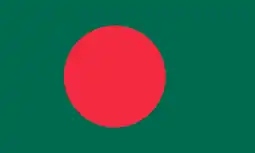 Bangladesh – Bangladesh Ordnance Factories produced Chinese Type 56 under license till 2006.[52][86] Currently used by BGB, police and BNCC.
Bangladesh – Bangladesh Ordnance Factories produced Chinese Type 56 under license till 2006.[52][86] Currently used by BGB, police and BNCC. Belarus[89][88]
Belarus[89][88]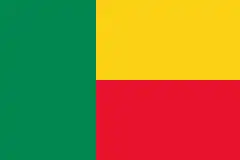 Benin[86]
Benin[86].svg.png.webp) Bolivia[86]
Bolivia[86] Bosnia-Herzegovina[88]
Bosnia-Herzegovina[88] Bulgaria:[86] National Guards Unit
Bulgaria:[86] National Guards Unit Burundi[86]
Burundi[86] Cambodia[86]
Cambodia[86] Cape Verde[86]
Cape Verde[86] Central African Republic[90]
Central African Republic[90] China: Type 56 variant.[3] Used for ceremonial purposes.[87]
China: Type 56 variant.[3] Used for ceremonial purposes.[87]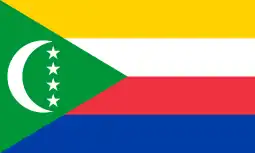 Comoros: Type 56 variant.[86][91]
Comoros: Type 56 variant.[86][91]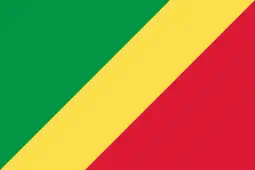 Congo-Brazzaville[92][80]
Congo-Brazzaville[92][80]- Democratic Forces for the Liberation of Rwanda (in Democratic Republic of Congo)[83]
 Croatia – ceremonial purposes[87]
Croatia – ceremonial purposes[87]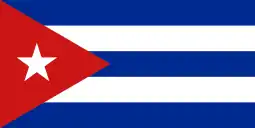 Cuba[87]
Cuba[87] Czech Republic[93]
Czech Republic[93] Egypt[86][94][95]
Egypt[86][94][95] Equatorial Guinea[86]
Equatorial Guinea[86]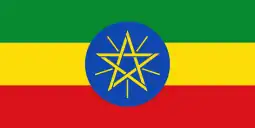 Ethiopia[93]
Ethiopia[93] Georgia[86]
Georgia[86]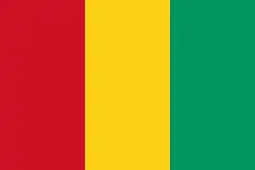 Guinea[86]
Guinea[86]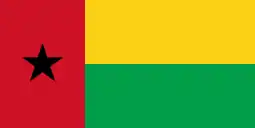 Guinea-Bissau[86]
Guinea-Bissau[86] Guyana[86]
Guyana[86] Hungary- ceremonial purposes[86][87][96]
Hungary- ceremonial purposes[86][87][96] India[86]
India[86] Indonesia[97]
Indonesia[97] Iraq[87]
Iraq[87]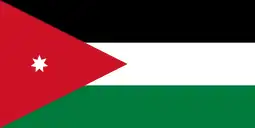 Jordan[86]
Jordan[86] Kazakhstan[98]
Kazakhstan[98]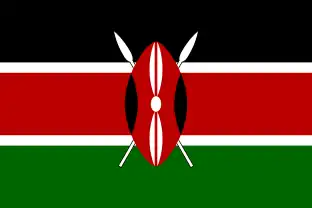 Kenya: Used by the Kenya Police Reserve.[99]
Kenya: Used by the Kenya Police Reserve.[99] Kosovo[87]
Kosovo[87].svg.png.webp) Kyrgyzstan[87]
Kyrgyzstan[87] Laos[86]
Laos[86]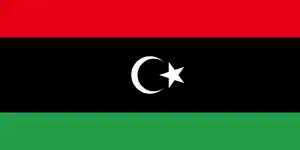 Libya[86]
Libya[86] Mali[87][100]
Mali[87][100] Malta[87]
Malta[87]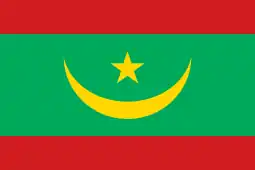 Mauritania[88]
Mauritania[88] Moldova[87]
Moldova[87] Mongolia[88][87]
Mongolia[88][87] Montenegro[88]
Montenegro[88] Mozambique[86]
Mozambique[86]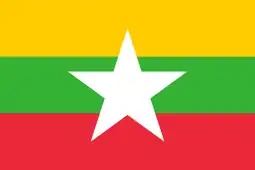 Myanmar[86]
Myanmar[86]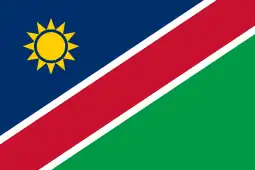 Namibia[72]
Namibia[72] Nepal[86]
Nepal[86]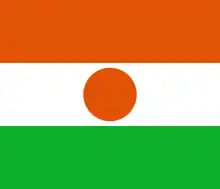 Niger[86]
Niger[86] North Macedonia[77]
North Macedonia[77] North Korea[3][86]
North Korea[3][86] Oman[94]
Oman[94]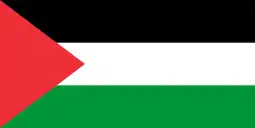 State of Palestine: used by the Palestinian Honor Guard.[87] SKS were also used by PLO troops in the 1970s[101][102]
State of Palestine: used by the Palestinian Honor Guard.[87] SKS were also used by PLO troops in the 1970s[101][102] Poland[103] – ceremonial use[87]
Poland[103] – ceremonial use[87] Romania[104] – ceremonial purposes[87]
Romania[104] – ceremonial purposes[87] Russia: Used as ceremonial rifle[105]
Russia: Used as ceremonial rifle[105]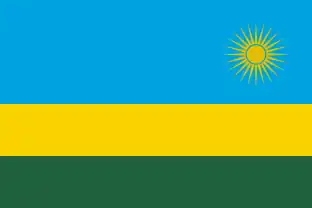 Rwanda[106]
Rwanda[106]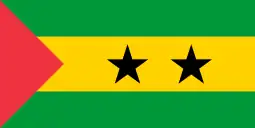 Sao Tome and Principe[86]
Sao Tome and Principe[86] Serbia[87]
Serbia[87]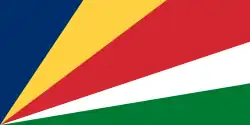 Seychelles[86]
Seychelles[86] Sierra Leone[86]
Sierra Leone[86] Slovenia – ceremonial purposes[87]
Slovenia – ceremonial purposes[87] South Sudan[93]
South Sudan[93] Sri Lanka[86]
Sri Lanka[86] Sudan[86]
Sudan[86] Syria[87]
Syria[87]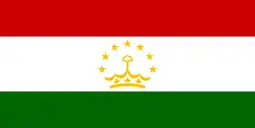 Tajikistan[87][93]
Tajikistan[87][93]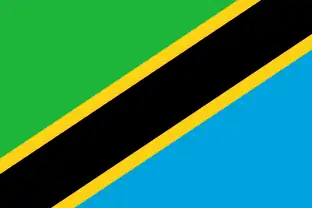 Tanzania[86]
Tanzania[86].svg.png.webp) Transnistria[107]
Transnistria[107]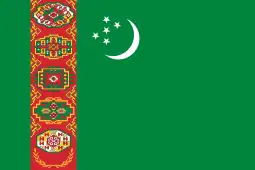 Turkmenistan[87][93]
Turkmenistan[87][93]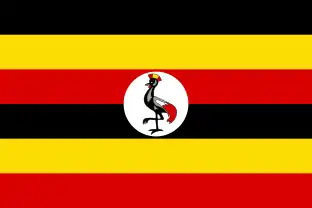 Uganda[86]
Uganda[86] Ukraine[108]
Ukraine[108] Uzbekistan[93]
Uzbekistan[93] Vietnam: Ceremonial and militia purposes.[86][87]
Vietnam: Ceremonial and militia purposes.[86][87] Yemen[94]
Yemen[94]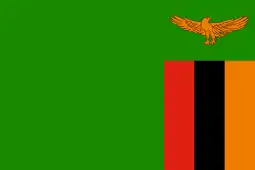 Zambia: Zastava M59 variant.[109]
Zambia: Zastava M59 variant.[109]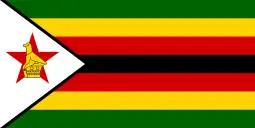 Zimbabwe: Type 56 variant; ceremonial and militia purposes.[87][91]
Zimbabwe: Type 56 variant; ceremonial and militia purposes.[87][91]
Former users
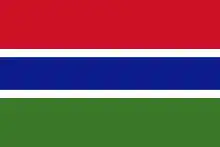 Gambia: Type 56 variant.[91]
Gambia: Type 56 variant.[91]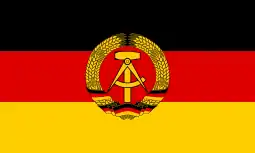 East Germany[3][110]
East Germany[3][110] Soviet Union: Retired from front-line service in the mid-1950s, retired from second-line service in the 1980s.[18]
Soviet Union: Retired from front-line service in the mid-1950s, retired from second-line service in the 1980s.[18].svg.png.webp) Yugoslavia: Zastava M59/66 variant.[3][86]
Yugoslavia: Zastava M59/66 variant.[3][86]
Commercial sales and sporting use
United States

Initially, the SKS was a rarity in the US, with the only examples being souvenirs brought back by returning veterans of the Vietnam War.[111] Beginning in 1988, thousands of surplus and newly manufactured Chinese Type 56 carbines were imported in the US.[112] Russia also began exporting the SKS to the US during the early 1990s as well.[113]
Due to the high volume of initial imports, the SKS became one of the most affordable centerfire rifles available to American sports shooters, retailing for as little as $70 per weapon in the early 1990s.[113] Dale Armstrong, a former firearms tracking analyst with the Bureau of Alcohol, Tobacco, Firearms and Explosives (ATF), commented on the volume of cheap surplus weapons, naming the SKS and Type 56 carbines specifically alongside Makarov and TT-33 type pistols: "A firearm of that quality could not be made for the price it was being sold. The people selling these firearms in the former Soviet bloc countries assumed control of these stockpiles after the fall of communism...[therefore] they had no manufacturing cost. These weapons were pure profit, so they could afford to sell them at a low price and in bulk."[114]
Between 1988 and 1998, several million SKS carbines exported from China and the former Soviet Union were sold on the commercial market in the US.[115]
Canada
The SKS rifle is very popular in Canada,[116][117][118] with some users referring to it as “Canada’s rifle.”[116] While the SKS is imported for commercial sales in Canada, it is affected by Canadian firearms legislation, which prohibits high capacity magazines.[119]
Under Canadian law, the SKS is classified as a non-restricted firearm provided the magazine has been modified to accept five rounds or retrofitted with entirely new five-shot magazines. When the Liberal government of Justin Trudeau introduced an amendment to the pending Bill C-21 that would have expanded and changed the basis for classifying assault weapons under the law, the resulting ban on the SKS was a particular point of contention because it is widely used for hunting, notably by First Nations in Canada.[116][117][118] The leadership of the Assembly of First Nations voted unanimously to express opposition to the amendment.[118] The amendment was eventually withdrawn due to the widespread opposition.[116]
See also
References
- 1 2 3 4 5 6 7 8 Ezell, Edward (1986). The AK47 Story: Evolution of the Kalashnikov Weapons. Harrisburg: Stackpole Books. pp. 322–342. ISBN 978-0811722476.
- ↑ "Archived copy" (PDF). www.smallarmssurvey.org. Archived from the original (PDF) on 15 May 2020. Retrieved 22 May 2022.
{{cite web}}: CS1 maint: archived copy as title (link) - 1 2 3 4 5 Hogg, Ian (2002). Jane's Guns Recognition Guide. Jane's Information Group. ISBN 0-00-712760-X.
- 1 2 3 4 5 6 7 8 9 10 11 12 13 14 SKS Rifle: Simonov Type 56 Archived 24 December 2012 at the Wayback Machine | TC 9–56, Department of the Army Training Circular, SKS RIFLE, Simonov Type 56, Headquarters, Department of the Army, October 1969
- ↑ "SKS Instruction Manual". Archived from the original on 11 April 2012. Retrieved 25 April 2012.
- 1 2 3 4 5 6 Smith, Joseph (March–April 1961). "Current Soviet small arms". Infantry magazine. Fort Moore, Georgia: United States Army Infantry School. 51 (2): 21–23.
- 1 2 3 4 5 6 7 8 9 10 Johnson, Harold (March–April 1961). "Current Soviet small arms". Army Research and Development. Alexandria, Virginia: United States Army Materiel Command. 15 (6): 31–32.
- 1 2 3 4 5 6 7 8 9 10 11 12 Chivers, C. J. (2011). The Gun. New York: Simon and Schuster. pp. 155–167, 186. ISBN 978-0-7432-7173-8.
- ↑ "Патрон – основа оружия. Глава третья. Из истории автоматного 7,62-мм патрона образца 1943 г. (7,62х39)", Оружие 2005/9, pp. 21–44
- ↑ Lockhart, Paul (2021). Firepower: How Weapons Shaped Warfare. New York City: Basic Books. pp. 322–342. ISBN 978-1541672963.
- ↑ Cronin, Audrey (2020). Power to the People: How Open Technological Innovation is Arming Tomorrow's Terrorists. Oxford: Oxford University Press. p. 149. ISBN 978-0190882143.
- 1 2 3 Poyer, Mark; Kahaya, Steve (2020). The SKS Carbine. Tustin: North Cape Publications. pp. 3, 136. ISBN 978-1882391141.
- 1 2 Jenzen-Jones, N.R. (2017). "Global Development and Production of Self-loading Service Rifles, 1896 to the Present" (PDF). Geneva: Graduate Institute of International and Development Studies. Archived from the original (PDF) on 15 May 2020. Retrieved 15 May 2020.
- 1 2 3 "SALW Guide: Global distribution and visual identification" (PDF). Bonn: Bonn International Center for Conversion. 2016. Archived from the original (PDF) on 15 May 2020. Retrieved 15 May 2020.
- 1 2 3 4 5 Walter, John (2005). Guns Of The Elite Forces. London: Greenhill Books. p. 41. ISBN 1853676373.
- 1 2 3 Laemlein, Tom (5 May 2020). "When the SKS faced the M14". Geneseo, Illinois: Springfield Armory, Inc. Archived from the original on 2 September 2022. Retrieved 2 September 2022.
- ↑ Schmidl, Erwin; Ritter, László (2006). The Hungarian Revolution 1956. Oxford: Osprey Publishing. pp. 53, 60. ISBN 978-1846030796.
- 1 2 "7,62-мм самозарядний карабін Симонова (СКС)". Kyiv: Ukraine Military Pages. 13 September 2021. Archived from the original on 28 May 2022. Retrieved 11 December 2022.
- ↑ Davies, Peter (2021). UH-1 Huey Gunship vs NVA/VC Forces: Vietnam 1962–75. Oxford: Osprey Publishing. p. 6. ISBN 978-1472845153.
- 1 2 3 O'Dowd, Edward (2009). Chinese Military Strategy in the Third Indochina War: The last Maoist war. Abingdon: Routledge. p. 144. ISBN 978-0415545280.
- 1 2 Brimelow, Benjamin (10 March 2021). "A bloody battle over a tiny island raised fears that China and the Soviets would start World War III". Business Insider. New York City. Archived from the original on 11 July 2022. Retrieved 4 September 2022.
- ↑ Yegorov, Oleg (2 March 2019). "How China and USSR nearly started WW3". Russia Beyond. Moscow. Archived from the original on 2 September 2022. Retrieved 4 September 2022.
- ↑ "Simonov SKS Model 1943 7.62 mm self-loading rifle used by the Egyptian Army during the Suez Crisis, 1956". London: National Army Museum. 2021. Archived from the original on 23 January 2021. Retrieved 3 April 2021.
- 1 2 3 Henry, Michel (May–June 1971). "Small arms in the Middle East: A potpourri of weapons". Infantry magazine. Fort Moore, Georgia: United States Army Infantry School: 26.
- 1 2 Gander, Terry (1990). Guerrilla Warfare Weapons: The Modern Underground Fighter's Armoury. New York City: Sterling Publishing Company. pp. 52, 80. ISBN 978-0806973333.
- ↑ Senich, Peter (1996). The One-Round War: USMC Scout-Snipers In Vietnam. Madison: University of Wisconsin Press. p. 316. ISBN 978-0-87364-867-7.
- ↑ Boutell, Earl; Petmecky, H.G (2016). Only by the Hand of God. Pittsburgh: Dorrance Publishing Company. p. 14. ISBN 978-1-4809-2467-3.
- ↑ Pratt, John Clark (2008). Vietnam Voices: Perspectives on the War Years, 1941–1975. Athens, Georgia: University of Georgia Press. p. 272. ISBN 978-0820333694.
- ↑ Venter, Al J (2013). Portugal's Guerrilla Wars in Africa: Lisbon's Three Wars in Angola, Mozambique and Portuguese Guinea 1961–74. Solihull: Helion and Company. p. 134. ISBN 978-1909384576.
- ↑ Petter-Bowyer, P. J. H. (November 2005) [2003]. Winds of Destruction: the Autobiography of a Rhodesian Combat Pilot. Johannesburg: 30° South Publishers. p. 380. ISBN 978-0-9584890-3-4.
- ↑ Hooper, Jim (2013) [1988]. Koevoet! Experiencing South Africa's Deadly Bush War. Solihull: Helion and Company. p. 260. ISBN 978-1868121670.
- ↑ Eisenman, Joshua; Shinn, David (2012). China and Africa: A Century of Engagement. Philadelphia: University of Pennsylvania Press. p. 489. ISBN 978-0-8122-4419-9.
- ↑ Luthuli, Daluxolo; Bopela, Thula (2005). Umkhonto We Siswe: Fighting for a Divided People. Ann-Arbor: University of Michigan Press. pp. 60–61. ISBN 9781919854168.
- ↑ Abarinov, Vladimir (8 August 1992). "Investigation: The ANC's secret arms caches". Nezavisimaya Gazeta. Moscow. p. 4.
- ↑ Pauw, Jacques (1997). Into the Heart of Darkness: Confessions of Apartheid's Assassins. Johannesburg: Jonathan Ball Publishers. p. 124. ISBN 978-1868420582.
- ↑ Herf, Jeffrey (2016). Undeclared Wars with Israel: East Germany and the West German Far Left, 1967–1989. Cambridge: Cambridge University Press. p. 139. ISBN 978-1107461628.
- ↑ Shultz, Richard (1988). The Soviet Union and Revolutionary Warfare: Principles, Practices, and Regional Comparisons. Stanford: Hoover Institution Press. p. 107. ISBN 978-0817987114.
- ↑ Ghusheh, Ibrahim (1997). The Red Minaret: Memoirs of Ibrahim Ghusheh. Beirut: AL-Zaytouna Centre Press. p. 63. ISBN 978-9953-572-24-6.
- 1 2 Moloney, Ed (2003). A Secret History of the IRA. New York City: W.W. Norton. p. 159. ISBN 978-0393325027.
- ↑ Gilks, Anne; Segal, Gerald (1985). China and the Arms Trade. Abingdon: Routledge Books. p. 47. ISBN 978-1-032-43630-2.
- ↑ Maamiry, Ahmed (1979). Oman and East Africa. New Delhi: Lancers Publishers. p. 49. ASIN B0007BZ2BY.
- ↑ Venter, A.J. (1997). Africa at War. Old Greenwhich, Connecticut: Devin-Adair Publishing Company. p. 122. ASIN B0006CA5W0.
- ↑ Tsui, David Chak Wing (1995). China and the Communist Armed Struggle in Thailand. New Delhi: Radiant Publishers. p. 49. ISBN 978-8170272090.
- ↑ Harding, Steve (1984). Air War Grenada. Missoula, Montana: Pictorial Histories Publishing Company. pp. 8–9. ISBN 9780933126527.
- ↑ "A Caribbean Arms Cache". Engineer. Fort Leonard Wood, Missouri: United States Army Engineer School. 13 (4): 31. December 1983.
- 1 2 3 Myatt, Frederick (1981). An Illustrated Guide to Rifles and Sub-Machine Guns. London: Salamander Books. p. 61. ISBN 0-86101-077-9.
- 1 2 Chapple, Amos (23 August 2017). "The War For Abkhazia: 25 Years Later". Radio Free Europe/Radio Liberty. Prague. Archived from the original on 26 August 2022. Retrieved 4 September 2022.
- ↑ "War and Peace in the Caucasus: LKN and the Missingmore collections". Open Society Foundations. October 2000. Archived from the original on 16 August 2019. Retrieved 4 September 2022.
- 1 2 Pereborshchikov, Georgii (29 February 2016). "'You could say we proved ourselves' War stories from Russians returned from fighting in eastern Ukraine". Meduza. Riga. Archived from the original on 8 July 2022. Retrieved 4 September 2022.
- ↑ Ю. Пономарёв СКС ОБР. 2000 ГОДА Archived 22 July 2014 at the Wayback Machine, Kalashnikov magazine, 2000/4, pp. 56–59
- ↑ "Collecting and Shooting the SKS Carbine". SurplusRifle.com. Archived from the original on 23 January 2005.
- 1 2 "Small Arms Factory". Bangladesh Ordinance Factory. Retrieved 1 November 2020.
- ↑ "SKS Rifle: The Hottest Cashier at Dollar Tree". RECOIL. Archived from the original on 13 February 2023.
- ↑ "Yooper John's SKS – Battle rifle of many nations". Archived from the original on 8 January 2012. Retrieved 1 July 2011.
- ↑ "Zastava arms: 1945–1970". Archived from the original on 18 May 2015. Retrieved 24 July 2015.
- ↑ "SKS Review: the Yugo 59/66A1". Shooters' Journal. Archived from the original on 19 November 2014. Retrieved 26 November 2014.
- ↑ Kokalis, Peter G. "Karabiner-S the mysterious (and rare) East German SKS: the Chinese SKS is a dime a dozen, but if you see one of these, be ready to reach for the checkbook; it's the rarest variant in this country". The Free Library. Archived from the original on 21 October 2021.
- ↑ "North Korean Small Arms (Democratic People's Republic of Korea)". Small Arms Review. Vol. 16, no. 2. June 2012. Archived from the original on 2 February 2019. Retrieved 3 February 2019.
- ↑ "Pictures of North Korean SKSs (middle of page)". Archived from the original on 5 November 2015. Retrieved 26 November 2014.
- ↑ "Picture of North Korean SKSs (side swinging bayonet at bottom)". Archived from the original on 5 November 2015. Retrieved 26 November 2014.
- ↑ McCollum, Ian (2 October 2020). "North Vietnamese SKS". Forgotten Weapons. Archived from the original on 13 February 2023. Retrieved 24 August 2021.
- ↑ "Beyond State Control" (PDF). smallarmssurvey.org. Archived from the original (PDF) on 26 November 2019. Retrieved 12 January 2022.
- ↑ Thomas, Nigel (1998). The Korean war 1950-53. Osprey military Men-at-arms series (Repr ed.). London: Osprey. ISBN 978-0-85045-685-1.
- ↑ Hackworth, David, About Face: The Odyssey of an American Warrior, Simon and Schuster (1990) p. 29, 63
- ↑ Windrow, Martin (1997). The Algerian War, 1954–62. Men-at Arms 312. London: Osprey Publishing. p. 23. ISBN 978-1-85532-658-3.
- ↑ "Arms for freedom". 29 December 2017. Archived from the original on 5 March 2018. Retrieved 31 August 2019.
- ↑ "Soviet SKS carbine". Imperial War Museums. Archived from the original on 27 November 2018. Retrieved 26 November 2018.
- ↑ Ezell, Edward Clinton (1988). Personal firepower. The Illustrated history of the Vietnam War 15. Bantam Books. p. 84. ISBN 9780553345490. OCLC 1036801376.
- ↑ Schmidl, Erwin; Ritter, László (10 November 2006). The Hungarian Revolution 1956. Elite 148. Osprey Publishing. p. 60. ISBN 9781846030796.
- ↑ Abbott, Peter; Rodrigues, Manuel (1998). Modern African Wars 2: Angola and Mozambique 1961–74. Osprey Publishing. p. 12.
- ↑ Abbott, Peter; Botham, Philip (15 June 1986). Modern African Wars (1): Rhodesia 1965–80. Men-at-Arms 183. Osprey Publishing. p. 10. ISBN 9780850457285.
- 1 2 Heitman, Helmoed-Romer (1991). Modern African Wars (3): South-West Africa. Osprey Publishing. p. 33. ISBN 978-1-85532-122-9. Archived from the original on 16 May 2016. Retrieved 1 September 2018.
- ↑ Scarlata, Paul (1 March 2009). "Ethiopian military rifle cartridges: Part 2: from Mauser to Kalashnikov". Shotgun News. Archived from the original on 24 November 2018. Retrieved 24 November 2018.
- ↑ Scarlata, Paul (July 2009). "Military rifle cartridges of Lebanon Part 2: from independence to Hezbollah". Shotgun News. Archived from the original on 28 November 2018. Retrieved 28 November 2018.
- ↑ Sicard, Jacques (November 1982). "Les armes de Kolwezi". La Gazette des armes (in French). No. 111. pp. 25–30. Archived from the original on 19 October 2018. Retrieved 18 October 2018.
- ↑ Small Arms Survey (2005). "Sourcing the Tools of War: Small Arms Supplies to Conflict Zones". Small Arms Survey 2005: Weapons at War. Oxford University Press. p. 166. ISBN 978-0-19-928085-8. Archived from the original (PDF) on 30 August 2018. Retrieved 29 August 2018.
- 1 2 Krott, Rob (October 2003). "Macedonia's Weaponry: A New Nation Re-Arms and Fights". Small Arms Review. Vol. 7, no. 1. Archived from the original on 30 March 2019. Retrieved 30 March 2019.
- ↑ David, Francis (30 May 1997). "Les patriotes sont passés de la gloire à l'oubli. Igoudjal, village kabyle et amer". Le Soir (in French). Archived from the original on 31 March 2019. Retrieved 31 March 2019.
- ↑ Small Arms Survey (2007). "Armed Violence in Burundi: Conflict and Post-Conflict Bujumbura" (PDF). The Small Arms Survey 2007: Guns and the City. Cambridge University Press. p. 204. ISBN 978-0-521-88039-8. Archived from the original on 27 August 2018. Retrieved 29 August 2018.
- 1 2 Small Arms Survey (2003). "Making the Difference?: Weapon Collection and Small Arms Availability in the Republic of Congo". Small Arms Survey 2003: Development Denied. Oxford University Press. pp. 267–268. ISBN 0199251754. Archived from the original (PDF) on 29 August 2018. Retrieved 29 August 2018.
- ↑ "Mantan Milisi Timor-Timur Serahkan 1 Pucuk Senjata Api Organik kepada Satgas Yonif RK 744/SYB" (in Indonesian). 30 October 2020. Archived from the original on 6 May 2021. Retrieved 3 May 2021.
- ↑ Small Arms Survey (2012). "Surveying the Battlefield: Illicit Arms In Afghanistan, Iraq, and Somalia". Small Arms Survey 2012: Moving Targets. Cambridge University Press. p. 320. ISBN 978-0-521-19714-4. Archived from the original (PDF) on 31 August 2018. Retrieved 30 August 2018.
- 1 2 Small Arms Survey (2015). "Waning Cohesion: The Rise and Fall of the FDLR–FOCA" (PDF). Small Arms Survey 2015: weapons and the world (PDF). Cambridge University Press. p. 201. Archived from the original (PDF) on 28 January 2018. Retrieved 29 August 2018.
- ↑ "Small arms recovered in Mali raid | Armament Research Services". armamentresearch.com. 24 December 2014. Archived from the original on 20 October 2015. Retrieved 3 September 2015.
- ↑ Ferguson, Jonathan; Jenzen-Jones, N.R (November 2014). "Raising Red Flags: An examination of arms & munitions in the ongoing conflict in Ukraine" (PDF). Perth: Armament Research Services. Archived from the original (PDF) on 4 April 2022. Retrieved 4 September 2022.
- 1 2 3 4 5 6 7 8 9 10 11 12 13 14 15 16 17 18 19 20 21 22 23 24 25 26 27 28 29 30 31 32 33 34 35 36 37 Jones, Richard D. Jane's Infantry Weapons 2009/2010. Jane's Information Group; 35 edition (27 January 2009). ISBN 978-0-7106-2869-5.
- 1 2 3 4 5 6 7 8 9 10 11 12 13 14 15 16 17 18 19 20 21 22 "Yooper John's SKS – Battle rifle of many nations". Archived from the original on 4 August 2018. Retrieved 14 February 2019.
- 1 2 3 4 5 6 7 Bonn International Center for Conversion. Simonov SKS (PDF) (Report). SALW Guide: Global distribution and visual identification. p. 3. Archived (PDF) from the original on 13 July 2018. Retrieved 13 July 2018.
- ↑ "Sulekha.com – For all your Local Needs & Property Details". Sulekha. Retrieved 26 November 2014.
- ↑ "Importante saisie d'armes en Centrafrique" (in French). Radio France Internationale. 15 March 2014. Archived from the original on 13 July 2018. Retrieved 13 July 2018.
- 1 2 3 "Military Intelligence Summary: Volume IV, Africa South of the Sahara". Defense Technical Information Center. March 1985. Archived from the original on 3 November 2020. Retrieved 29 July 2021.
- ↑ "Congo : PCAD – suspension temporaire des opérations de collecte d'armes" (in French). 24 November 2006. Archived from the original on 13 July 2018. Retrieved 13 July 2018.
- 1 2 3 4 5 6 BICC, p. 4.
- 1 2 3 Miller, David (2001). The Illustrated Directory of 20th Century Guns. Salamander Books Ltd. ISBN 1-84065-245-4.
- ↑ Smith 1969, p. 614.
- ↑ Smith 1969, p. 456.
- ↑ Smith 1969, p. 461.
- ↑ Постановление Правительства Республики Казахстан № 1060 от 28 августа 1996 года "О внесении изменений и дополнений в некоторые решения Правительства Республики Казахстан"
- ↑ Kushner, Jacob (20 June 2017). "Bandits, cows and bullets: the gangs turning to guns in Kenya". The Guardian. London. Archived from the original on 21 March 2023. Retrieved 20 September 2023.
- ↑ Touchard, Laurent (18 June 2013). "Armée malienne : le difficile inventaire". Jeune Afrique (in French). Archived from the original on 8 April 2019. Retrieved 14 February 2019.
- ↑ Laffin, John (15 June 1982). Arab Armies of the Middle East Wars 1948–73. Men-at-Arms 128. Osprey Publishing. p. 36. ISBN 9780850454512.
- ↑ Katz, Sam (24 March 1988). Arab Armies of the Middle East Wars (2). Men-at-Arms 128. Osprey Publishing. p. 44. ISBN 9780850458008.
- ↑ "The Polish Use of the SKS on carbinesforcollectors.com". Archived from the original on 2 March 2012. Retrieved 26 November 2014.
- ↑ Smith 1969, p. 533.
- ↑ Galeotti, Mark (February 2017). The Modern Russian Army 1992–2016. Elite 217. Osprey Publishing. pp. 16, 44. ISBN 9781472819086.
- ↑ "Rwandan Army Military Equipment". armyrecognition.com. Archived from the original on 23 September 2015. Retrieved 26 December 2014.
- ↑ Oryx. "The Victory Day Parade That Everyone Forgot". Oryx. Retrieved 9 May 2022.
- ↑ Наказ Міністерства внутрішніх справ України "Про організацію службової діяльності цивільної охорони Державної служби охорони при МВС України" № 1430 від 25 November 2003
- ↑ Mtonga, Robert; Mthembu-Salter, Gregory (1 October 2004). "Country study: Zambia" (PDF). Hide and Seek: Taking Account of Small Arms in Southern Africa. p. 285. Archived from the original on 25 September 2018. Retrieved 25 September 2018.
- ↑ Smith, Joseph E. (1969). Small Arms of the World (11 ed.). Harrisburg, Pennsylvania: The Stackpole Company. p. 381. ISBN 9780811715669.
- ↑ Sweeney, Patrick (2009). The Gun Digest Book of the AK & SKS: A Complete Guide to Guns, Gear and Ammunition. pp. 407–409.
- ↑ Shideler, Dan (2011). The Gun Digest Book of Guns & Prices, 6th Edition. p. 650.
- 1 2 "Comrades do a booming business". Newsweek. New York City. 23 January 1994. Archived from the original on 20 January 2023. Retrieved 20 January 2023.
- ↑ Armstrong, Dale (2018). Firearms Trafficking - A Guide for Criminal Investigators. Saco: Prudens Group Consulting. p. 13. ISBN 978-0692158807.
- ↑ Cutshaw, Charlie (1998). The New World of Russian Small Arms and Ammo. p. 1.
- 1 2 3 4 Levitz, Stephanie (3 February 2023). "Inside the Trudeau government's decision to scrap its controversial gun ban amendments". The Toronto Star. Archived from the original on 19 March 2023. Retrieved 5 February 2023.
- 1 2 Dyer, Evan (6 December 2022). "How Bill C-21 turned from banning handguns to hunting guns". CBC News. Archived from the original on 15 March 2023. Retrieved 5 February 2023.
- 1 2 3 McLeod, Marsha (8 December 2022). "First Nations leaders unanimously vote against Ottawa's gun control legislation". The Globe and Mail. Archived from the original on 28 February 2023.
- ↑ "Canada firearm regulations pertaining to magazine capacity". Archived from the original on 30 July 2007. Retrieved 26 November 2014.
External links
- Soviet SKS Operation Manual from 1974
- The short film STAFF FILM REPORT 66-25A (1966) is available for free viewing and download at the Internet Archive. (in Italian)
- Simonov SKS (CKC45g)
- Why is the SKS Rifle Popular?